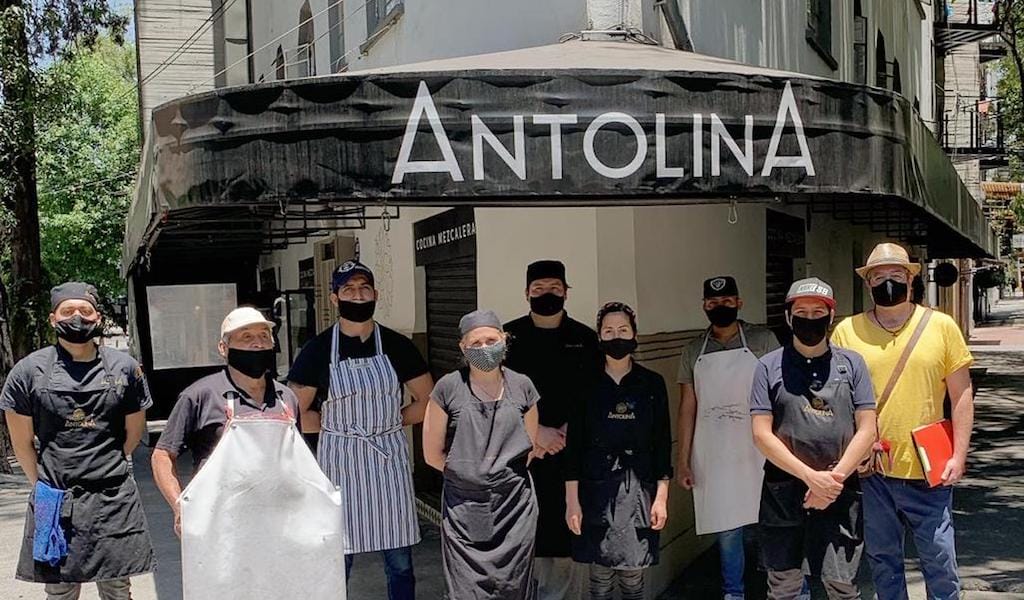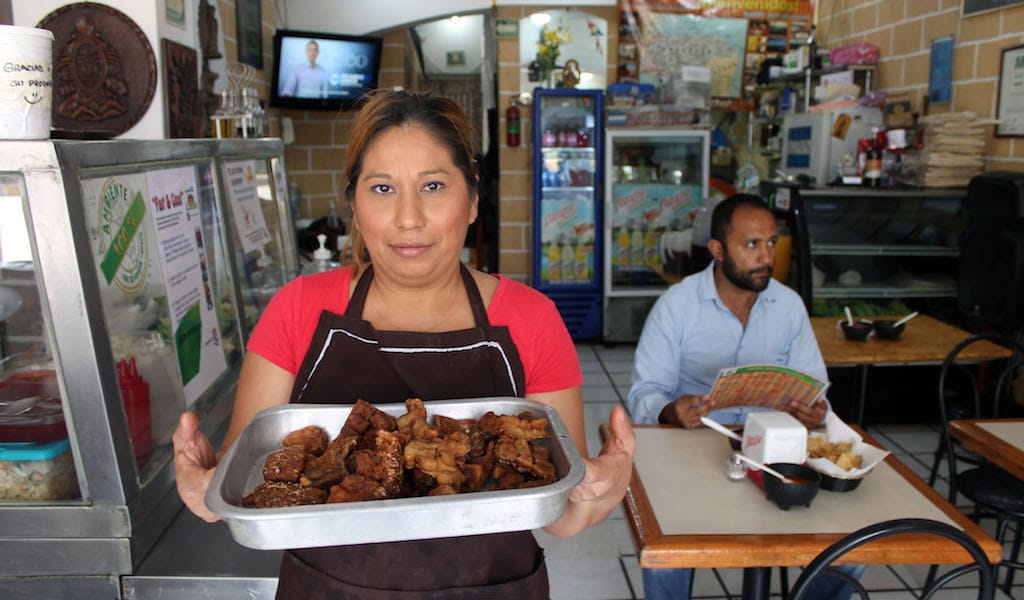Nestled in the smaller bay of the Gulf of Naples, on the northern side of the Posillipo cape, Pozzuoli is the main center of the Phlegraean Fields, a vast and fertile volcanic area still marked by craters, sulfurous fumes, and seismic activity, rich with natural and archaeological treasures.
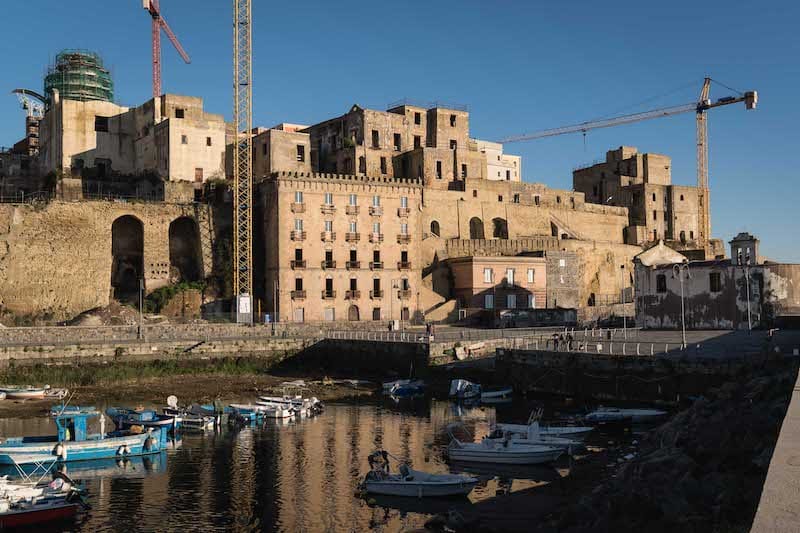
Pozzuoli was once a Greek colony and a main Roman harbor and trading port the later a fishing village. Today it’s a busy ferry terminal – ferries heading towards the islands of Ischia and Procida leave from here – and a lively coastal district. Considered an independent municipality, Pozzuoli stretches from Bagnoli (a seaside area in the outskirts of Naples, home to a former massive iron and steel factory now partially turned into a museum) to Baia, a charming village facing over the sea with its castle and the spectacular underwater archeological park showcasing the remains of Roman villas, spas, mosaics and statues preserved by the sea over the centuries.

To many Neapolitans, though, the town is simply an extension of their city. They choose it as a relaxed residential area or head here to buy freshly caught fish, for sun-drenched morning strolls along the lovely seafront, Sunday lunches, or bustling nights out. Easily reachable via the Cumana regional train line (or the metro line 2 which goes directly to the main station), Pozzuoli is a perfect day-trip destination to enjoy archeological treasures such as the Macellum (an ancient Roman market, for a long time erroneously considered a temple due of the findings of a statue of the Graeco-Egyptian god Serapis), beautiful views and excellent eats.
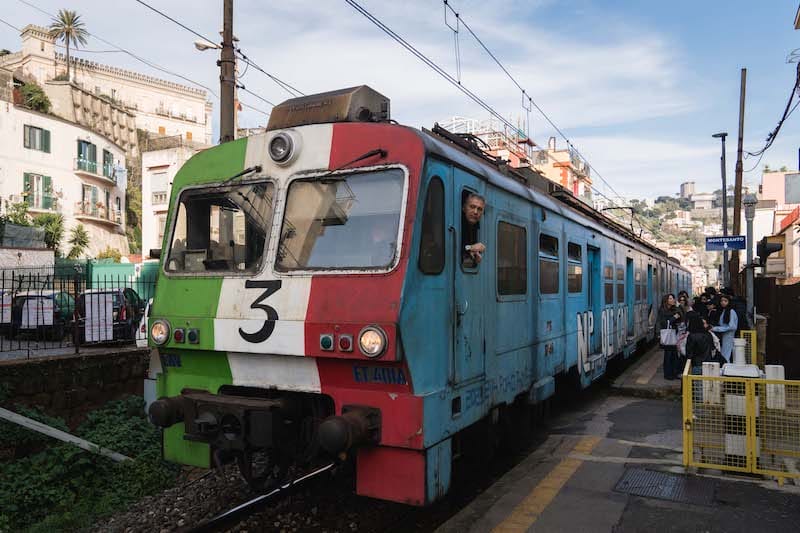
Getting off the Cumana train at Cappuccini station, one can walk a few hundred meters toward the sea to join the nicely renovated esplanade with benches, flowerbeds, and playgrounds reaching the panoramic viewpoint on the right. On the left is La Dea Bendata – the pizzeria of Ciro Coccia, brother to “enlightened pizzaiolo” Enzo Coccia – for an excellent wood-fired pizza or the opulent “cornucopia,” a fried cone of sorts with arancini and other fried bites served inside. (Another great option for pizza nearby is Diego Vitagliano’s terraced venue, though located along a high-speed road, it’s not easy to reach without a car.)
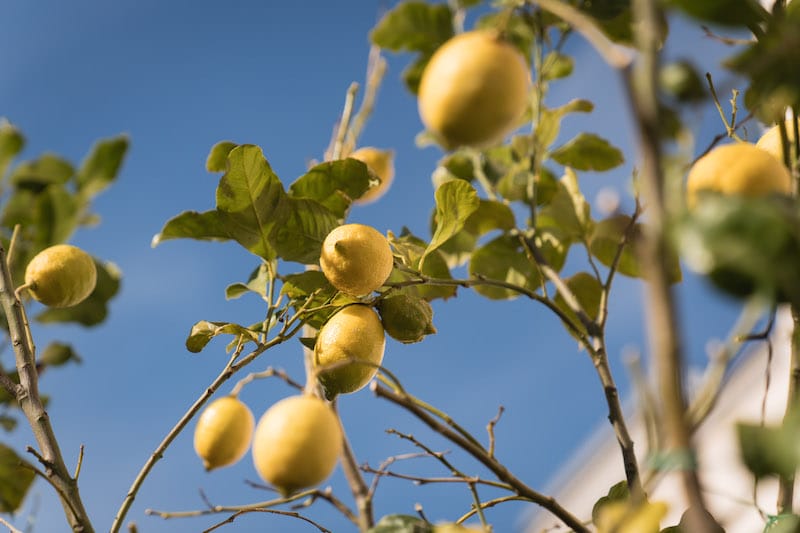
If you’re not yet ready for pizza, continue up a few stairs and a panoramic ramp to enjoy a fantastic view over the gulf, reaching another viewpoint. Right in front, the charming Villa Avellino – a sumptuous noble mansion dating back to the 16th century – today hosts a luxury inn with a beautiful garden and the multifaceted Mar Limone bistro. Created by chef Marianna Vitale and her business partner Pino Esposito (who also run the one-Michelin star restaurant Sud in Quarto, northwest Naples), this bright and colorful venue with outdoor seating, specialty coffee and cocktail bar and a few tables is an homage to acidity itself (as the name and ubiquitous lemon drawings remind us), especially in liquid form, thanks to a remarkable selection of sour beers, kombucha and ciders alongside wine and other drinks.

Open from 7:30 a.m. with an excellent offer of coffee, cakes, and pastries, the menu ranges from oysters, ceviche, and hummus made with local beans, to spaghetti with tomato sauce topped with different fish carpaccios and tartares, seashells or sea urchins, as well as massive sandwiches including a delicious toast with smoked ham, fontina cheese, green salad, whole grain mustard, and the ciabatta with pimentòn-marinated swordfish, friarielli broccoli, tahini and kimchi.
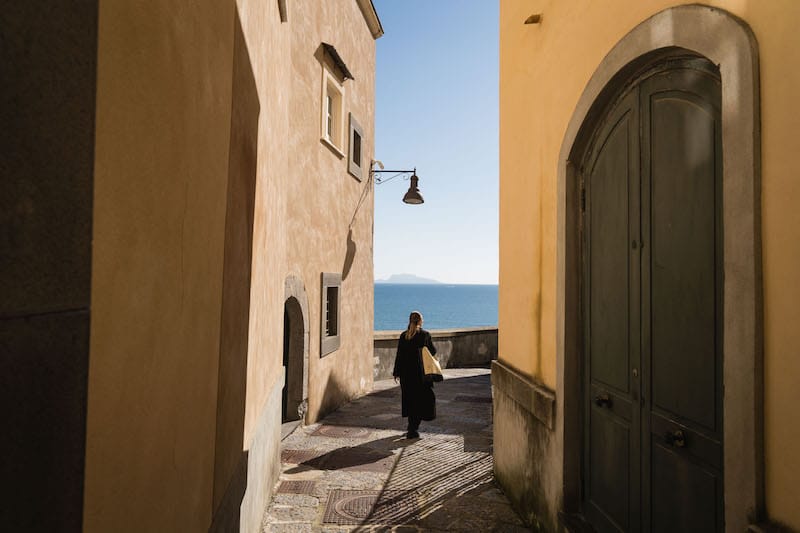
At a short walk, the stunning Rione Terra begins: the citadel perched on a promontory of tuff rock overlooking the gulf originated as the first settlement of Pozzuoli, inhabited since 194 BC as a Roman colony. Over time, due to seismic activity, earthquakes, and eruptions, its appearance and purpose shifted, adding layers of land and buildings, yet Rione Terra remained the heart of Pozzuoli. By the twentieth century, however, the once-lively fisherman village had turned into a rather rundown district, where people lived in harsh conditions. In the seventies, a redevelopment plan had all the local families evacuated to restore the seventeenth-century buildings and excavate the unique archeological stratification under their foundations. After a long stretch of abandonment and decay, the rebuilding campaign finally made the borough accessible again. This also unveiled parts of the ancient underground city from the Roman period, and in many parts it’s now possible to discern the impressive overlapping of different eras.
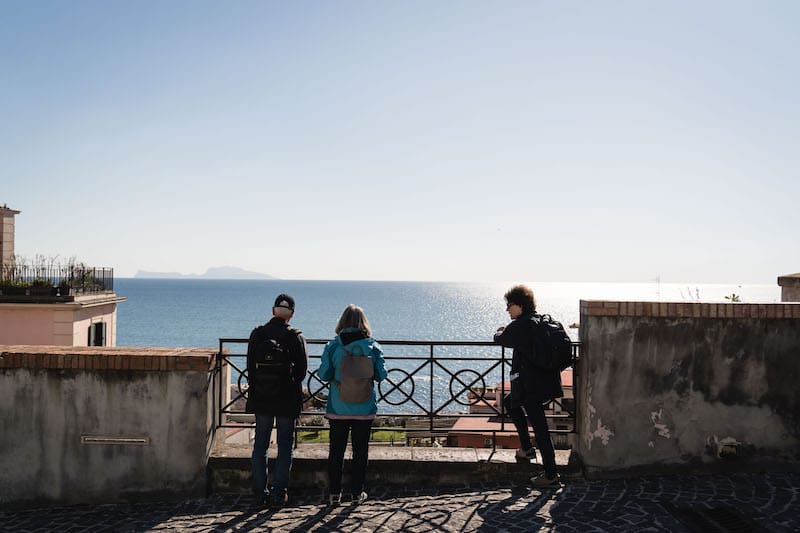
This can be seen in the Cathedral built in the 17th century above the walls of the Temple of Augustus, where today columns and marbles merge with Baroque chapels and painting, thanks to an effective restoration project. Finally accessible, the palaces and alleys are ready to come back to life, with the potential to house hotels, shops and terraced cafés, and the underground archeological path is ready to enthrall visitors through guided tours; unfortunately, an intricate jumble of bribes, negligence, and accusations is once again delaying the completion of the project. For now, though the underground tours are momentarily unavailable, the untarnished overground pathways are silent yet walkable.

For a different kind of exploration, head to the nearby Via Giuseppe Mazzini. The alley is home to the small-but stocked-food shop Polyphemos Enoformaggeria Flegrea. It’s run by Valeria Vanacore, an expert cheesemonger who collects delicious wheels and wedges from small cheese producers all over Italy and the rest of Europe. She also hosts tasting events and offers delicious aperitivi with heavenly cheeses and wine by the glass, with an array of goods from small organic producers.

Continuing towards the port, the geometric intersection of alleys just behind the dock once lined with fishermen’s houses today is a lively area packed with restaurants and bars. Amongst them, Abbascio ù Mare (literally, “Down by the Sea”) matches an unpretentious maritime mood to a classic and tasty fish menu – see spaghetti with clams, sautéed mussels, seafood sandwiches, and fish tartare – paired with cocktails and wines. While at the small UMD.Bar – the acronym stands both for Unique Mixology Dreamers and Ugo Music & Drink – owner and bartender Ugo Volpe and his Mexican wife Dana (who also runs the local Las Mexicanitas takeaway) match great drinks mainly based on rum and mezcal with cheese and charcuterie platters from Italy and abroad, and Mexican-inspired bites including nachos con chili and inventive fajitas and tacos.
With so much to see in Pozzuoli it may be hard to know where to start. On sunny days, you can always do as the locals do, and simply order a take-away cuoppo (paper cone) filled with fried fresh anchovies or squid rings at one of the few friggitorias facing over the port. Then, find a seat on a bench or a wall under the sun, and snack while enjoying the glorious spectacle offered by the gulf.
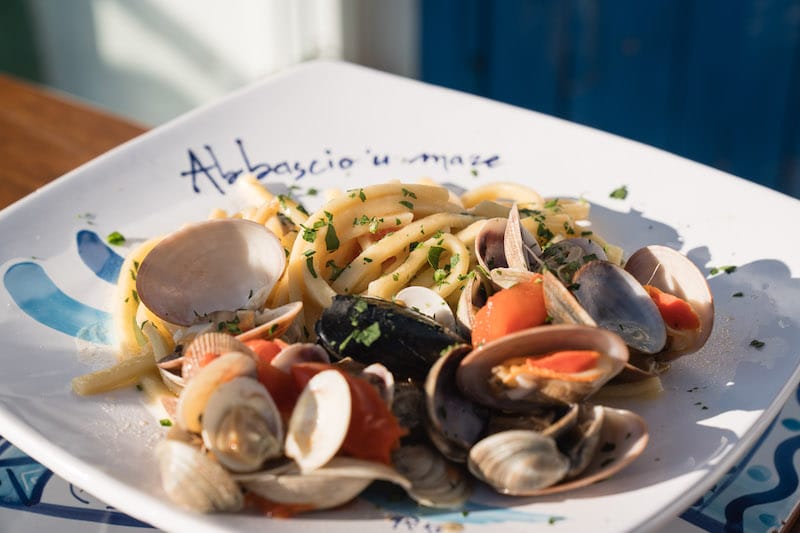
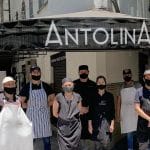 June 4, 2020 Antolina
June 4, 2020 Antolina
Covid-19 has brought most of Mexico City’s restaurants to a halt. But Antolina in the […] Posted in Mexico City August 31, 2017 El Trapiche
August 31, 2017 El Trapiche
At 2 p.m., the lunch rush begins at El Trapiche, a restaurant along Mexico City’s […] Posted in Mexico City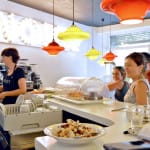 September 17, 2015 Norte
September 17, 2015 Norte
On a beautiful corner of L’Eixample sits Norte, a small yet warm, inviting and […] Posted in Barcelona
Luciana SquadrilliGianni Cipriano and Sara Smarrazzo
Published on March 11, 2024
Related stories
June 4, 2020
Mexico CityCovid-19 has brought most of Mexico City’s restaurants to a halt. But Antolina in the Condesa neighborhood has found a way to keep its kitchen active. “We were about to shut [the restaurant] down when we got the idea of doing something different to keep breathing,” says owner Pedro Sañudo. Pedro, known to his friends…
August 31, 2017
Mexico CityAt 2 p.m., the lunch rush begins at El Trapiche, a restaurant along Mexico City’s chaotic Avenida Revolución. Two women arrive from a nearby office and ask for the set lunch menu, comida corrida, that El Trapiche serves for 60 pesos (or around $3.30). “Today we have baleadas,” says Lilian Mendoza Rivera, El Trapiche’s owner…
September 17, 2015
BarcelonaOn a beautiful corner of L’Eixample sits Norte, a small yet warm, inviting and light-filled bar with a constellation of shining lights spelling out its name inside and a few tables with fresh flowers. The restaurant was started by three partners, Lara Zaballa, María González and Fernando Martínez-Conde (who left the project last year). They…





















































